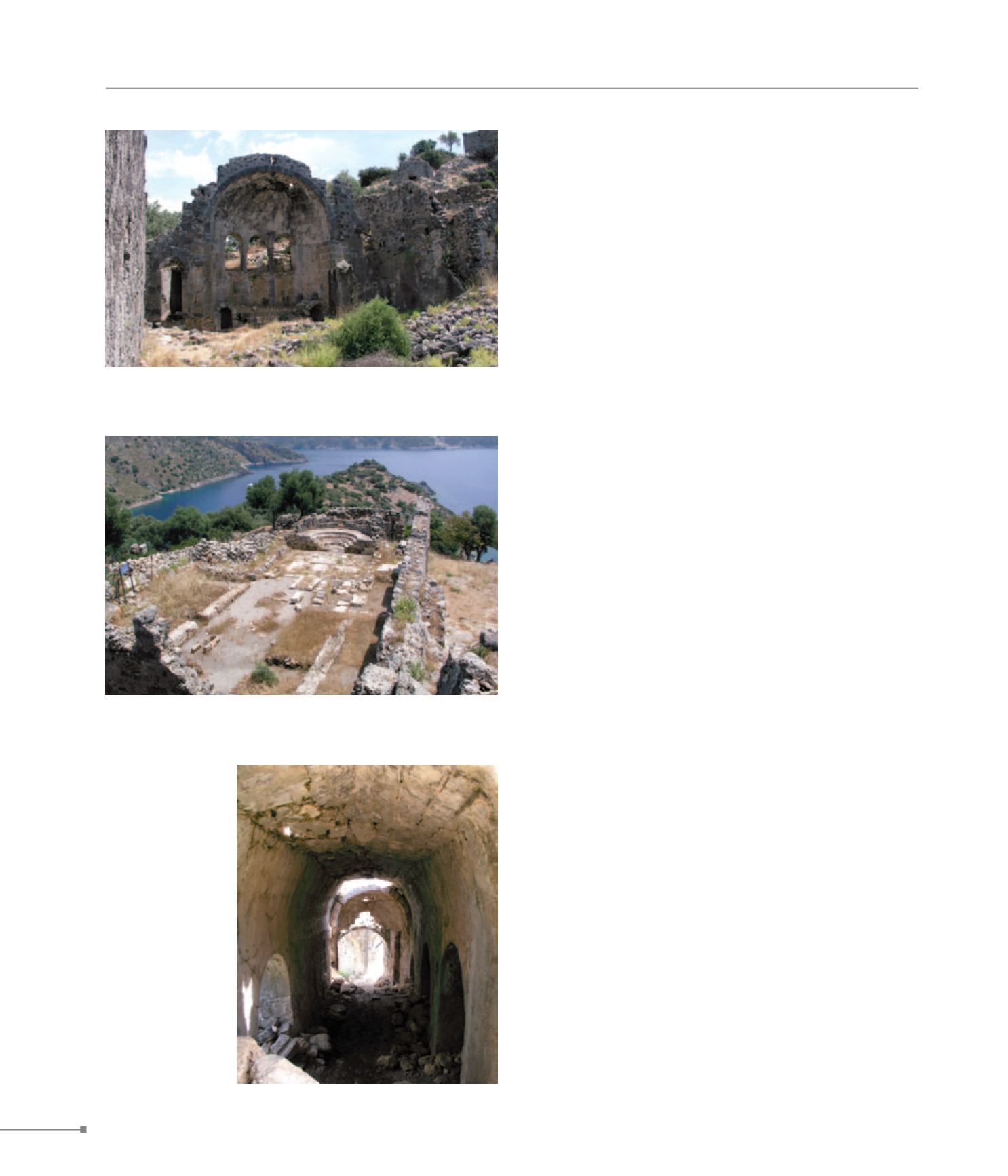
Gemiler Adası, Karacaören Adası.
Gemiler Adası, Karacaören Adası.
COASTLINE OF ASIA MINOR AND EASTERN THRACE
296
529. Gemiler Adas
ı
,
covered corridor
(Gemiler Adas
ı
,
σκεπαστή δίοδος)
529. Gemiler Adas
ı
, basilica C (Gemiler Adas
ı
, βασιλική Γ’)
529. Gemiler Adas
ı
, basilica B (Gemiler Adas
ı
, βασιλική Β’)
529.
Gemiler Adas
ı
, Karaca
ö
ren Adas
ı
.
Aghios
Nikolaos or Perdikonisi.
In the cave of
Ö
l
ü
deniz and its environs, S of Fethiye, are the
ruins of numerous Early Christian churches. Particularly im-
pressive are the buildings on the islet of Karaca
ö
ren Adas
ı
:
a basilica with baptistery and residences that probably be-
longed to a monastic complex or were accommodation for
pilgrims, as well as various vaulted graves and cisterns. From
two installations for the grounding of ships there remain rock-
carved stairs leading to the church. All the buildings were con-
structed of rough stones and mortar. There used to be sculpt-
ed decoration and some sculptures originating from Prokon-
nesos. On the larger islet, Gemiler Adas
ı
, five churches have
been discovered. Basilica A is extremely sea-weathered. The
wide apse and the very large baptistery decorated with mar-
ble revetments and mosaics attest to the significance of the
church. Basilica B still preserves its E section at a good height,
and features many Ionic impost capitals. Basilica Γ is located
almost on the peak of the island. It is a three-aisled basilica
with piers, but without galleries. Many remnants survive from
its marble decoration, and there are architectural elements of
porous stone. Mosaic floors have also been revealed. A 200 m
long covered corridor leads from Basilica Γ to Basilica Δ. It is a
unique Byzantine structure that facilitated the movement of pil-
grims from one church to the other, and protected them from
rain and sun. Of Basilica Δ only the outline can be discerned,
but remnants of sculptures suggest its opulent decoration.
The fifth church is covered by bushes.
Numerous other structures have been identified on the is-
land: graves of various types, including some domed tombs,
many cisterns, and ruined house walls still standing at a good
height. In the Early Christian and medieval years the cove of
Ö
l
ü
deniz was an anchorage and station for ships travelling
from Constantinople to the E Mediterranean Sea. The mon-
asteries of the area prospered at the time as they were vis-
ited by traders and pilgrims. Many of these monasteries have
been associated with the preservation of sacred relics, which
attracted pilgrims, a fact justifying their wealth. It is not known
what the implications were of the Arab raids in the 7th and 8th
c. It seems that some churches were still active after the raids,
as indicated by fragments of frescoes. Early Christian sculp-
tures exist in Kayak
ö
y (also called Kaya) – the medieval site of
Levissos (later Levissi).


